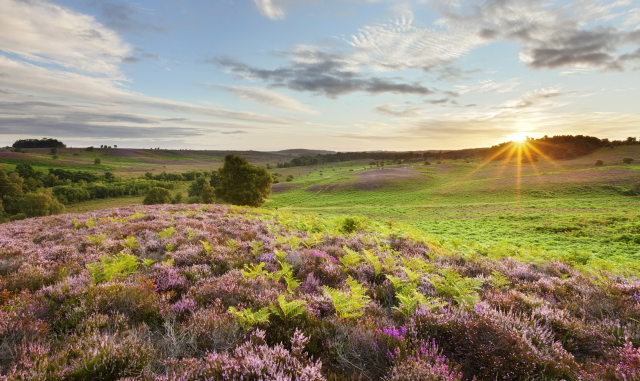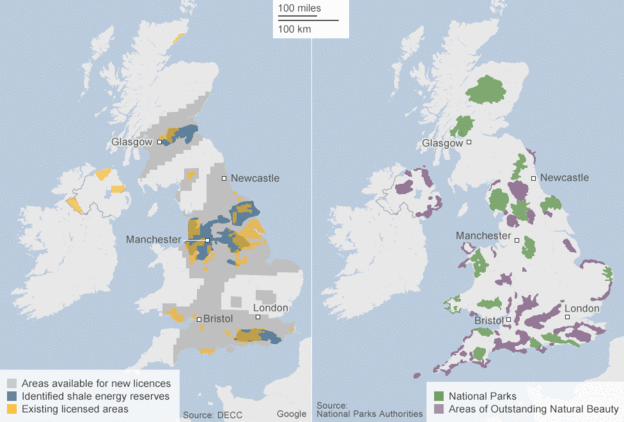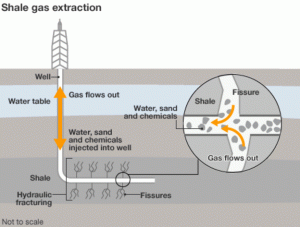
New government regulations will allow fracking for shale gas 1,200m below national parks and other protected sites.
The move is condemned by environmentalists, fearing the destruction of a natural heritage which has historically defined Britannia. Fracking disturbs the earth both physically and metaphysically.

BYPASS THE CENSORS
Sign up to get unfiltered news delivered straight to your inbox.
You can unsubscribe any time. By subscribing you agree to our Terms of Use
The procedure uses chemicals that eventually get mixed with the natural water that is the source of life. Minor earthquakes have been reported in and around fracking sites. Greenpeace UK had warned of the dangers of fracking horizontally beneath the ground of life, and the government attempts to do a U-turn on its pledge of an ‘outright ban’ on fracking in National Parks and other protected areas.
Greenpeace said yesterday that the UK government would “try to pull a fast one” on Wednesday. By drilling horizontally beneath protected sites, takes away the ground of their protection. The new regulations were approved by MPs on Wednesday by 298 votes to 261 in favor of extending fracking rights to include fracking under national parks.
The BBC reports:
Opposition parties and campaigners criticised the lack of a Commons debate – and accused ministers of a U-turn as they previously pledged an outright ban on fracking in national parks.
The government said its plans would protect “our most precious landscapes”.
It said the UK had “one of the best track records in the world for protecting our environment while developing our industries”.
Ballot papers
MPs overwhelmingly rejected a bid to suspend drilling for shale gas in a Commons vote in January, during which ministers also pledged an “outright ban” on fracking in national parks.
Labour has said the government’s plans, contained in a draft regulation, represent a U-turn on this commitment, and called for stronger safeguards.
The proposals, first set out in July, would only allow fracking 1,200m below national parks, Areas of Outstanding National Beauty, the Norfolk and Suffolk Broads and World Heritage Sites.
Sites of Special Scientific Interest, which are designated to protect wildlife or geology, are not mentioned.
MPs opposed the passing of the draft regulation when it was read out in the Commons on Tuesday evening. Because this happened after the conclusion of the day’s main business, parliamentary rules required the vote to be deferred – until Wednesday.
Under this process of so-called deferred divisions, MP voted on the proposal by filling in ballot papers with the result announced later by Deputy Speaker Natascha Engel.
Shadow energy secretary Lisa Nandy accused ministers of using a “parliamentary backdoor” to try to approve the “weak regulations” without debate.
She said: “Fracking should not go ahead in Britain until stronger safeguards are in place to protect drinking water sources and sensitive parts of our countryside like national parks.”
Government “trying to pull a fast one,” says Greenpeace UK:
The Government had previously committed to an ‘outright ban’ on fracking in National Parks, AONBs and SSSIs. However, the latest regulations attempt to sidestep this by allowing underground drilling in the fissures deep below protected areas. This could lead to thousands of lorry movements to transport equipment and fluids, noise from compressors, and 24 hour floodlighting around the perimeters of these areas – causing pollution to spill over into Britain’s most precious countryside.
SSSIs are conservation areas for wildlife and rare plants. There are around 4,000 in the UK, protecting 8% of land. There are 15 National Parks in England, Scotland and Wales, covering 22,658 square kilometres: more than a tenth of the area of Great Britain.
Greenpeace estimates that 300 square kilometres of the North York Moors, 75 square kilometres of the Peak District and smaller areas of the South Downs could become open to fracking after government consultation.
Hannah Martin, Energy Campaigner at Greenpeace, said:
‘It’s not even a year since the government promised to ban fracking in National Parks. Now it’s trying to pull a fast one through an arcane parliamentary process by hawking out the land beneath our most beautiful landscapes to let fracking companies drill sideways deep beneath them. It’s not only disingenuous, but it’s damaging for our countryside and it’s damaging for the environment.
‘Our so-called protected areas, including World Heritage Sites and National Parks, could end up fracked in all but name: flanked by drilling rigs, flares and heavy lorries which pollute the air and the land, as well as threaten groundwater sources. Fracking won’t cut bills for people. It’s unlikely to bring new jobs for local residents. And it could knock down the value of families’ homes and damage tourism in areas which depend on it.
‘Blindly ignoring the potential of renewable energy while pushing gas and nuclear just defies economic and environmental sense: and that’s even starker when it comes at the cost of our most fragile and treasured landscapes.’
Edmondo Burr
CEO
Assistant Editor
Latest posts by Edmondo Burr (see all)
- Police Arrest Suspect In Supermarket Baby Food Poisoning - October 1, 2017
- Seoul Secures Data From Electromagnetic Interference By N Korea - September 30, 2017
- The ‘World’s First Internet War’ Has Begun: Julian Assange - September 30, 2017


Be the first to comment